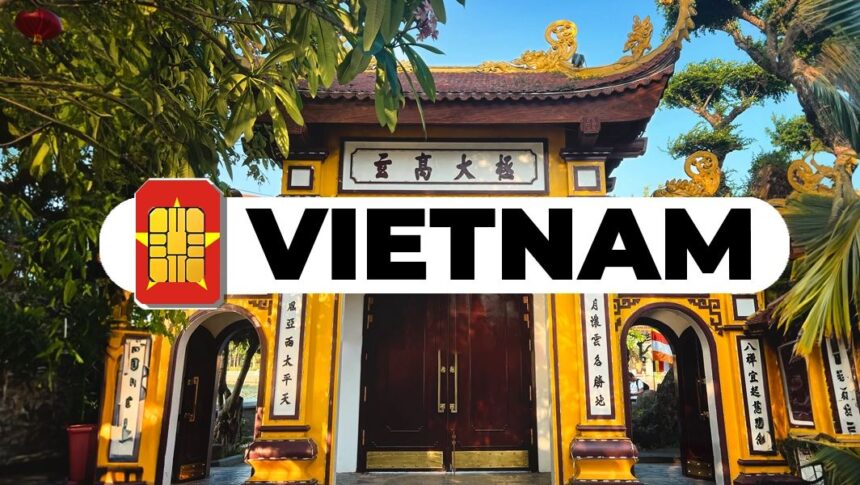Vietnam is a captivating destination for its rich culture, history, and vibrant traditions. Visitors are drawn to its bustling cities, serene countryside, and historical landmarks that tell stories of resilience and heritage. Understanding key cultural elements is essential to making the most of a journey through this Southeast Asian gem. Staying connected with a Vietnam tourist eSIM allows travelers to easily access maps, translation apps, and local recommendations, making navigating and enjoying these cultural experiences throughout their trip easier.
Understanding Local Etiquette
A vital part of exploring any country is respecting its customs and traditions; Vietnam is no exception. One of the most notable aspects of Vietnamese culture is the importance of respect within social interactions. The traditional greeting is a slight bow with a smile. When addressing someone, especially an elder or person of higher status, using appropriate titles shows understanding and respect. It is also common practice to avoid physical displays of affection in public, as these can be perceived as inappropriate.
Another important aspect of etiquette involves visiting temples and religious sites. To show respect, visitors should wear modest clothing covering their shoulders and knees. They are also expected to remove their shoes before entering homes and some places of worship. These small gestures can go a long way in fostering positive interactions and demonstrating cultural appreciation.
The Role of Food in Vietnamese Culture
Food is at the heart of Vietnam’s social fabric. The cuisine varies by region but shares common traits that make it distinct and flavorful. Northern dishes tend to be influenced by China and have subtle flavors, while Southern cuisine is spicier and sweeter, reflecting the area’s tropical ingredients. Central Vietnam is known for its complex dishes that combine salty, sweet, sour, and spicy elements.
Street food is an integral part of Vietnamese life. Sampling dishes from street vendors is necessary for any traveler looking to experience authentic flavors. Popular options include pho (noodle soup), banh mi (a French-inspired sandwich), and bun cha (grilled pork with rice noodles). Dining with locals at small eateries or street stalls can lead to unique conversations and insights into their way of life. Sharing meals and learning about their preparation methods allows visitors to connect more deeply with Vietnamese culture.
Navigating Communication Styles
Communication in Vietnam may differ from what travelers are accustomed to. The Vietnamese often favor indirect communication to maintain harmony and avoid confrontation. Subtle cues and body language play an important role in understanding conversations. It is essential to remain patient and attentive when speaking with locals, as this approach fosters mutual respect.
Politeness is highly valued, so avoiding loud or aggressive behavior is advisable. A warm smile can go a long way, as it signifies openness and friendliness. When requesting or asking for assistance, using polite phrases and showing gratitude can lead to a more positive experience. Learning a few essential Vietnamese words, such as “xin chào” (hello) and “cảm ơn” (thank you), shows genuine effort and respect, making interactions smoother and more pleasant.
Festivals and Traditions Worth Experiencing
Vietnam is home to various vibrant festivals that celebrate different aspects of its culture and heritage. One of the most significant is Tet Nguyen Dan, or Lunar New Year, which marks the arrival of spring. This festival is the perfect opportunity to witness traditional music, dances, and the preparation of unique dishes such as banh chung (a rice cake). Homes and streets are decorated with flowers, and families come together to celebrate, making this a joyous time for visitors to experience the warmth of Vietnamese hospitality.
Another notable festival is the Mid-Autumn Festival, or Tet Trung Thu, which features lantern parades, lion dances, and mooncakes. The event is especially popular with families and children, providing an immersive experience highlighting Vietnamese folklore and community spirit.
Exploring the Unique Blend of Modern and Traditional Life
Vietnam seamlessly blends the old with the new, creating a dynamic environment that captivates tourists. While skyscrapers and bustling markets characterize cities like Ho Chi Minh City and Hanoi, these urban areas are dotted with historical sites such as the Old Quarter, ancient temples, and colonial architecture. The contrast between modern developments and centuries-old structures reflects the country’s journey through time.
Venturing into rural areas presents a different perspective of Vietnam, where traditions remain more pronounced. Visiting the countryside offers a glimpse into age-old farming practices and local crafts passed down through generations. Travelers can learn about traditional weaving, pottery-making, and rice paper production. These experiences provide a deeper appreciation for Vietnamese craftsmanship and support local communities.
Gaining an understanding of Vietnam’s customs, cuisine, and traditions is key to making the most of a visit. Respecting local etiquette, embracing the diverse culinary landscape, learning basic communication practices, participating in festivals, and appreciating the blend of modern and traditional elements can significantly enrich any traveler’s experience. This cultural insight ensures that time spent in Vietnam is not only enjoyable but also meaningful. Equipped with a tourist eSIM, travelers can seamlessly access information and share their experiences in real-time, enhancing convenience and enabling a more immersive and meaningful journey in Vietnam.




